Abstract
A variety of names have been given to procedures used in correspondence training, some more descriptive than others. In this article I argue that a terminology more accurately describing actual procedures, rather than the conceptual function that those procedures are assumed to serve, would benefit the area of correspondence training. I identify two documented procedures during the reinforcement of verbalization phase and five procedures during the reinforcement of correspondence phase and suggest that those procedures can be classified, or grouped into nonoverlapping categories, by specifying the critical dimensions of those procedures belonging to a single category. I suggest that the names of such nonoverlapping categories should clearly specify the dimensions on which the classification is based in order to facilitate experimental comparison of procedures, and to be able to recognize when a new procedure (as opposed to a variant of one already in existence) is developed. Future research involving comparative analysis across and within procedures is discussed within the framework of the proposed classification.
Keywords: correspondence training, verbal behavior, intermediate behavior, nonverbal behavior
Full text
PDF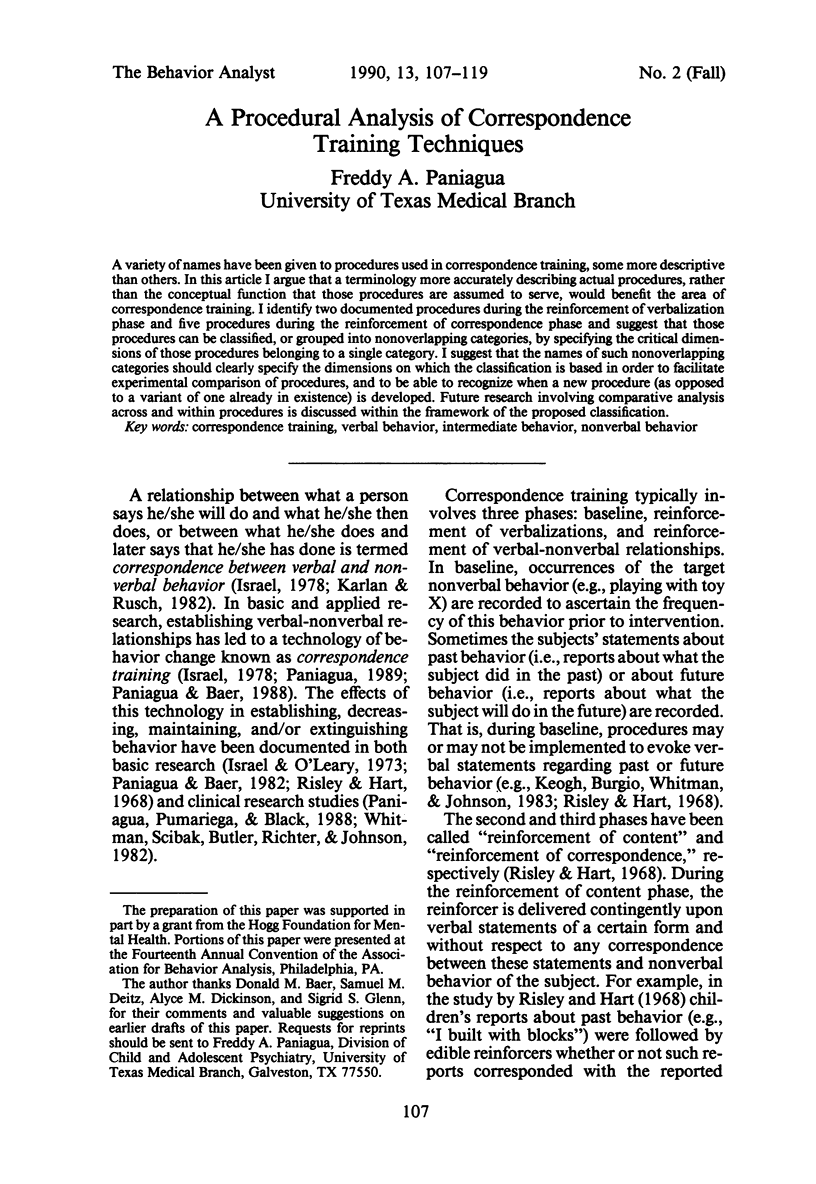
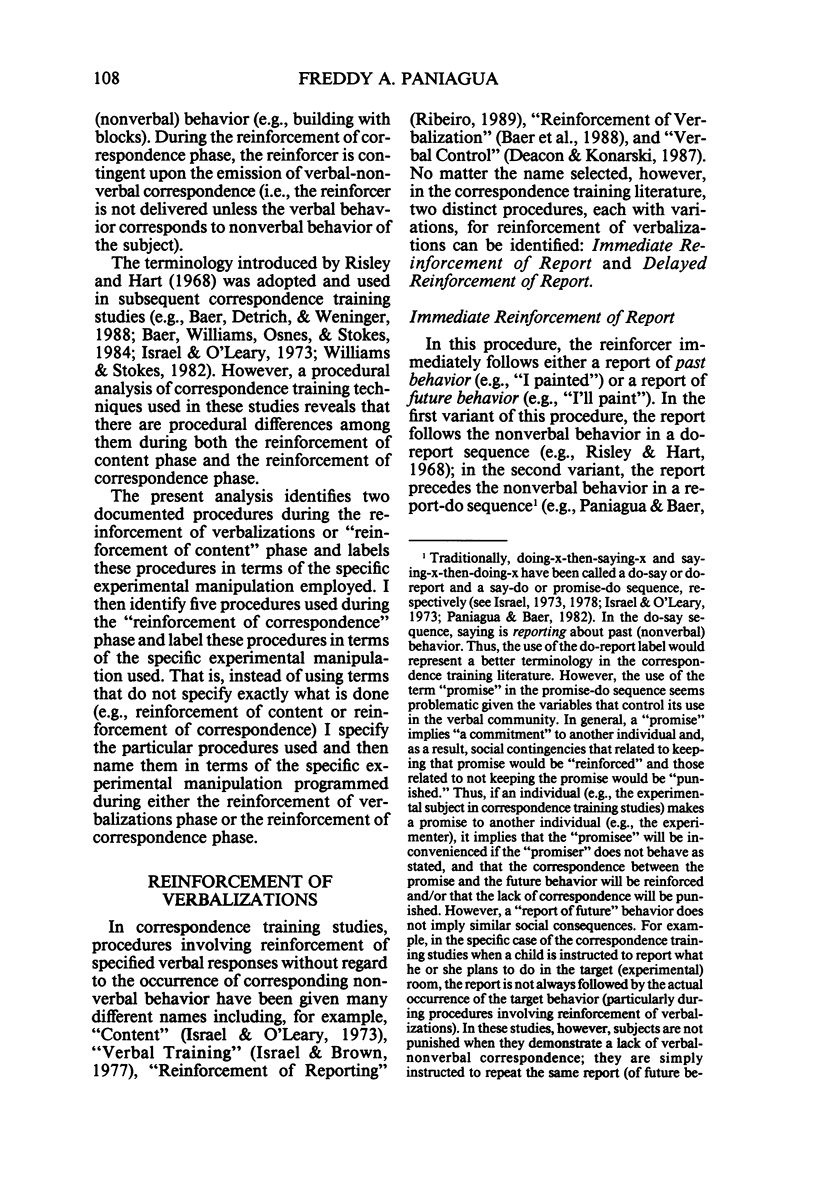
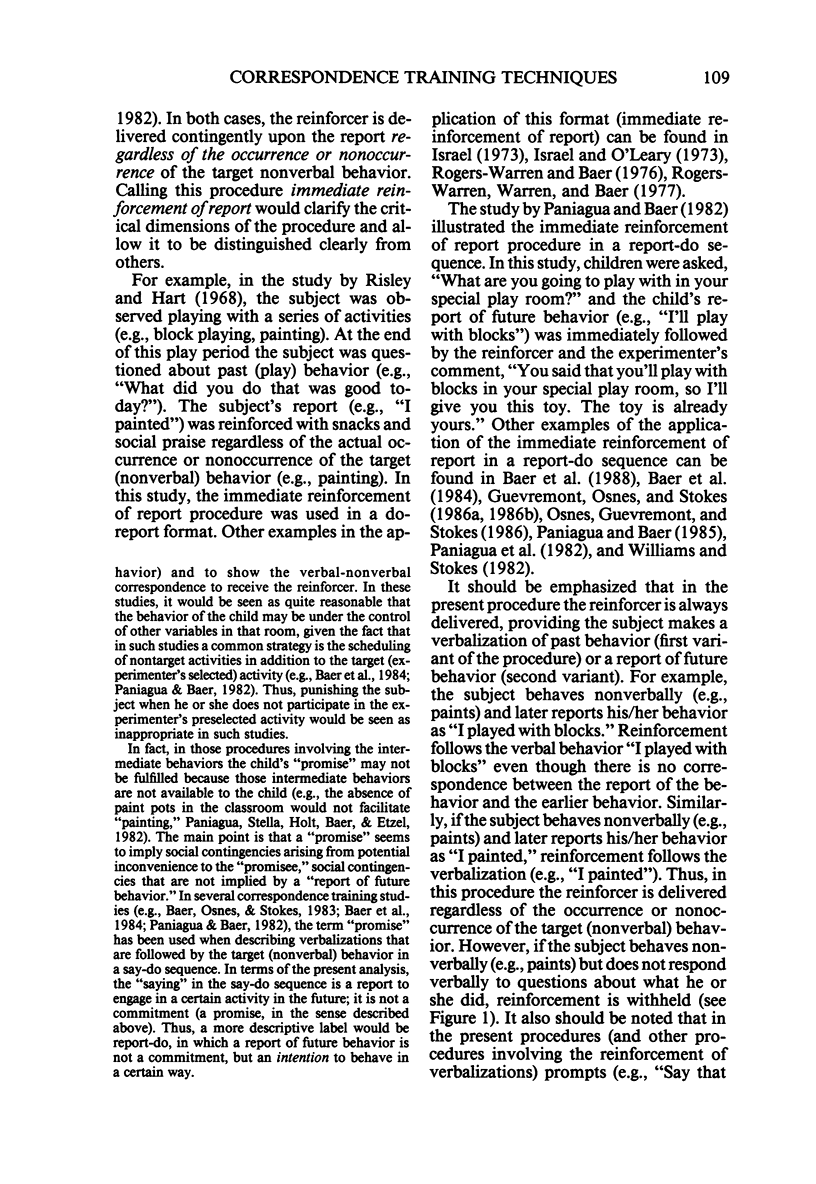
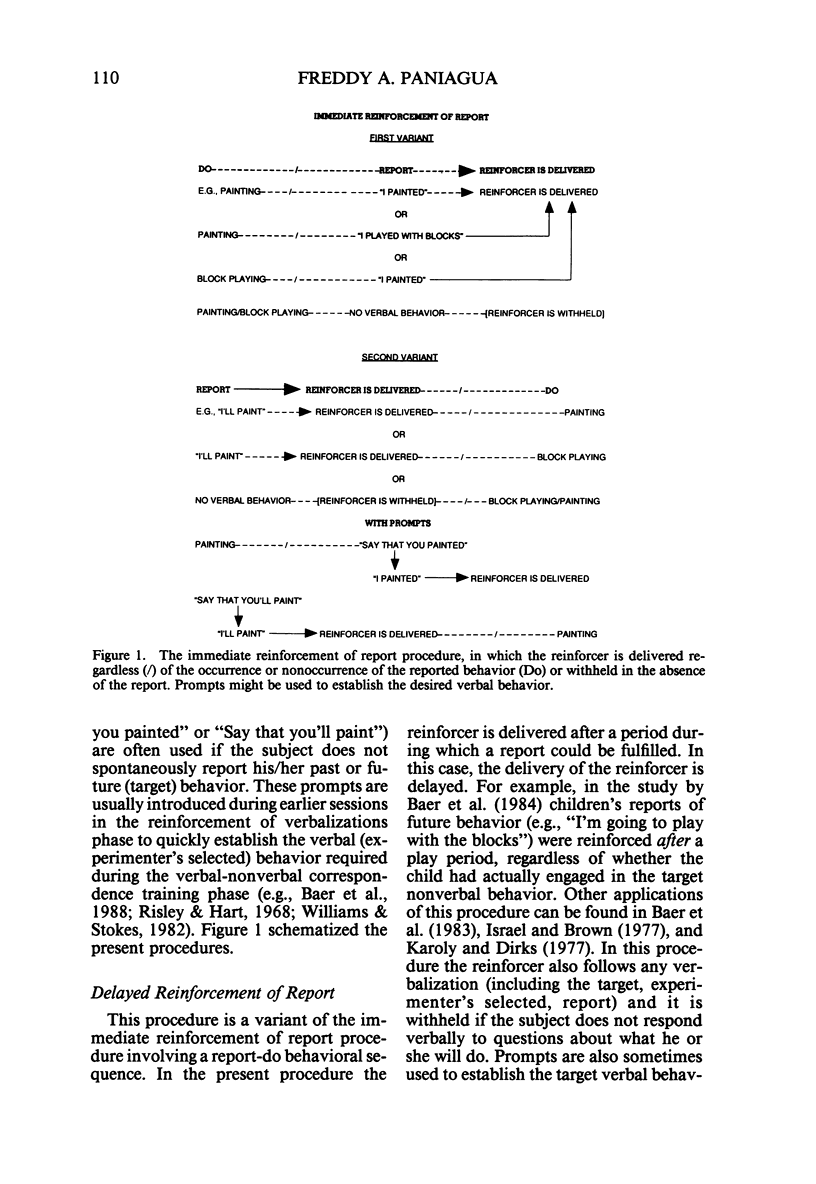
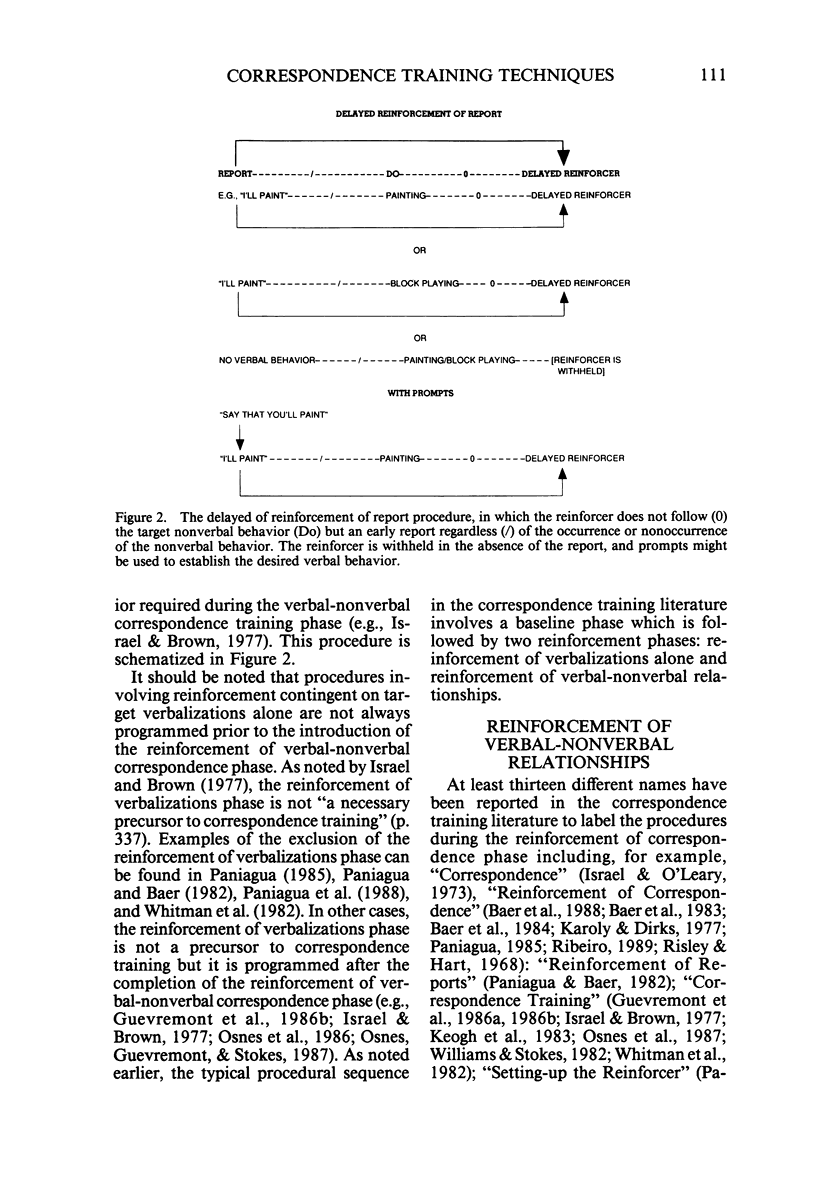
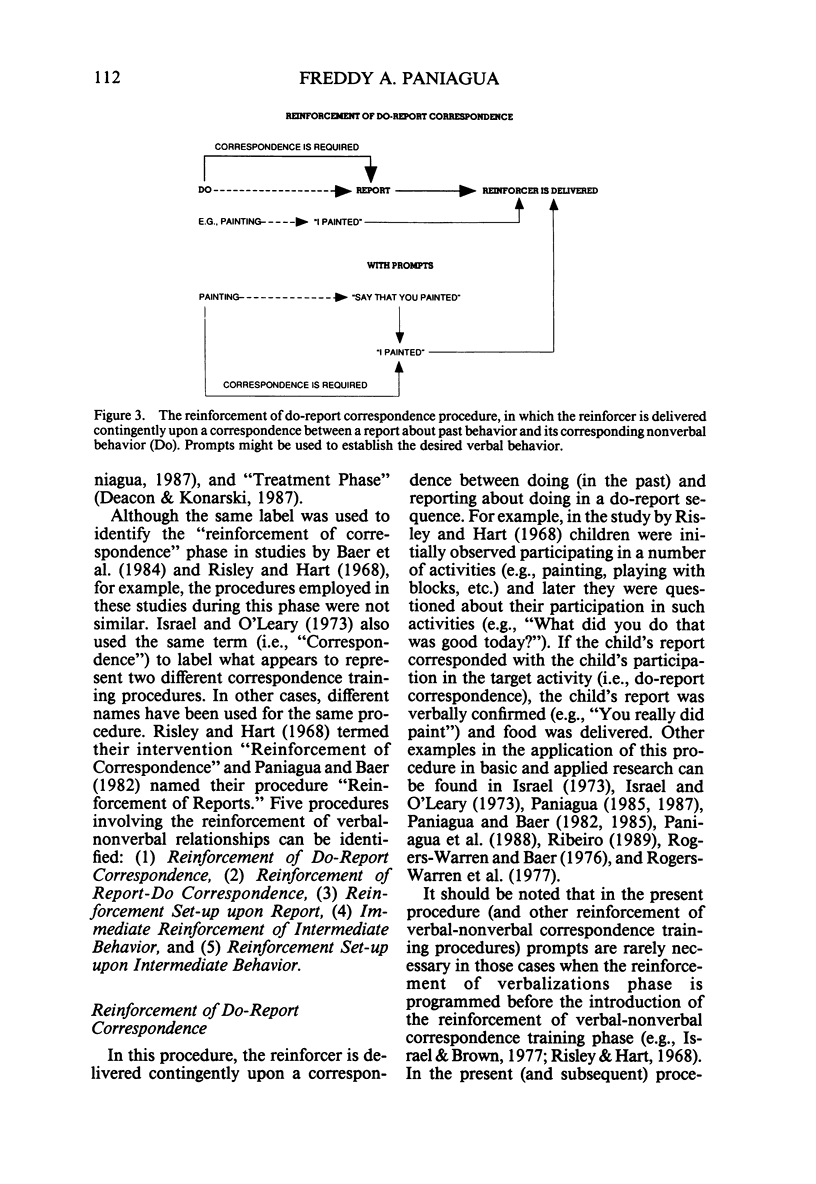
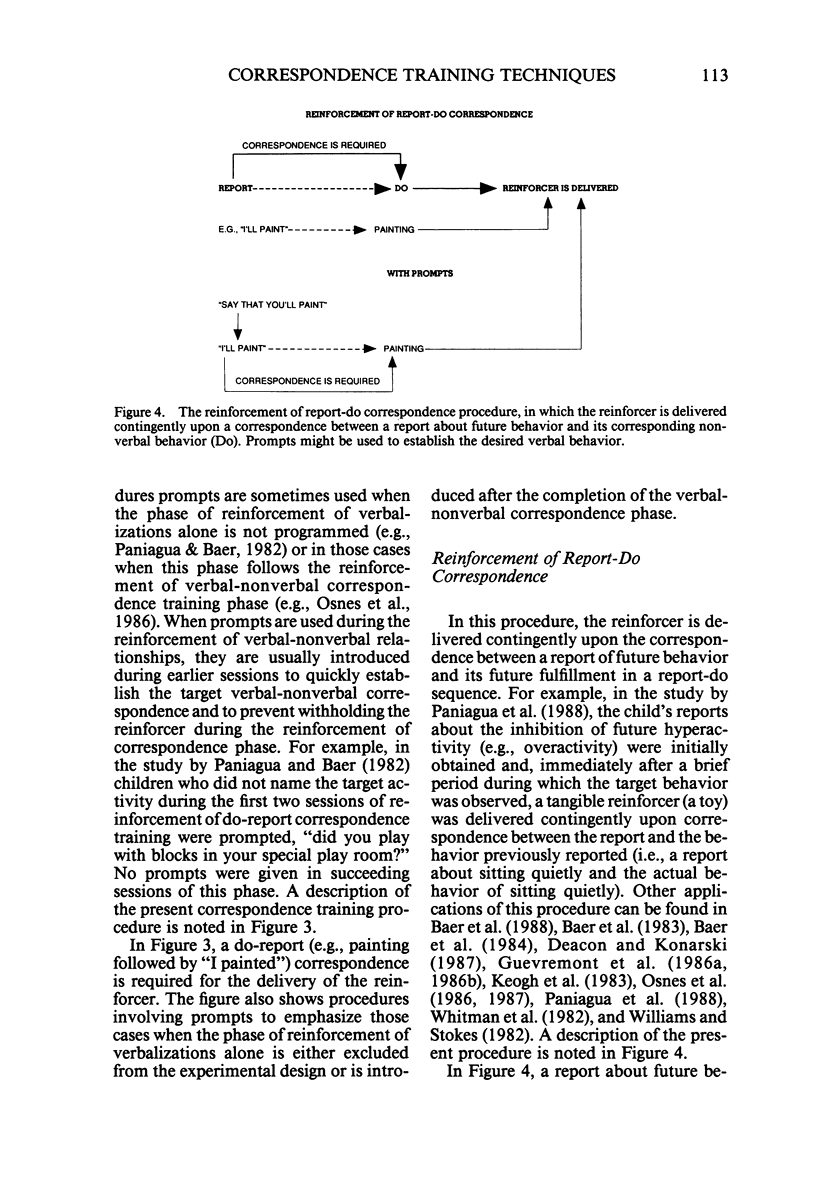
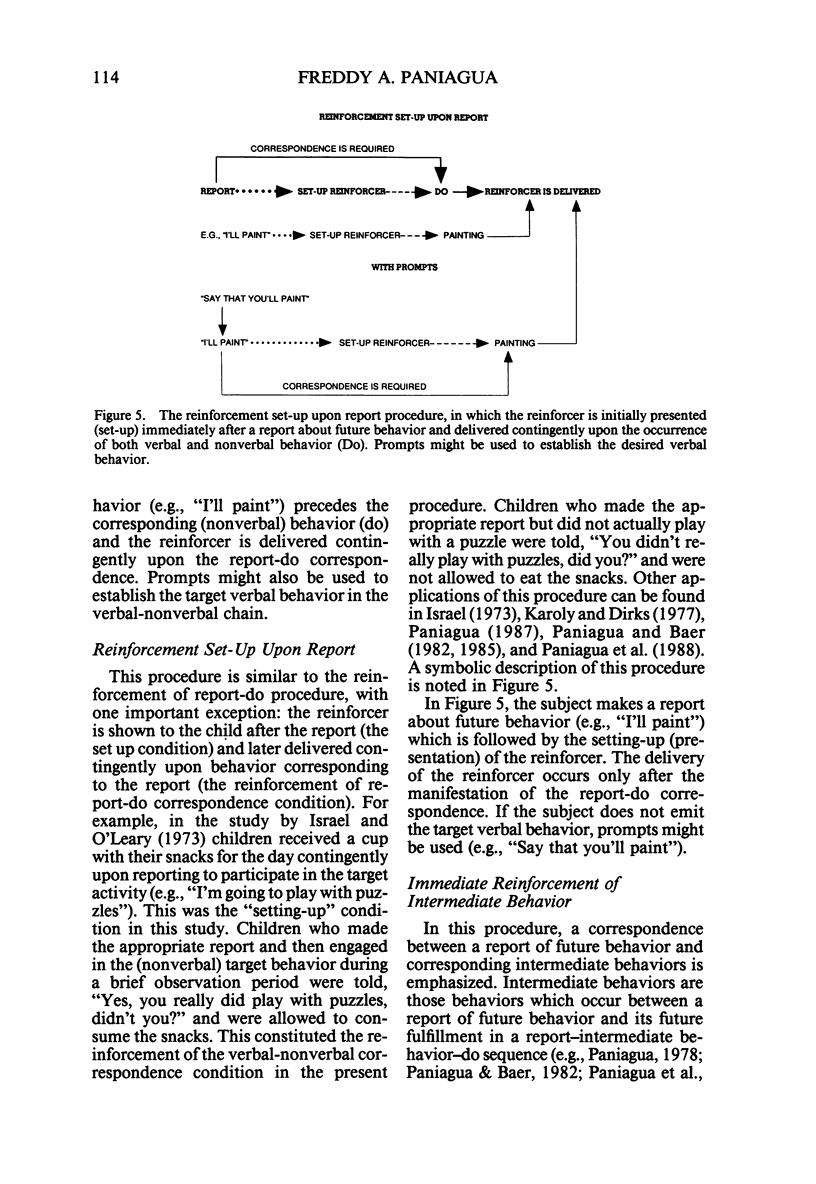
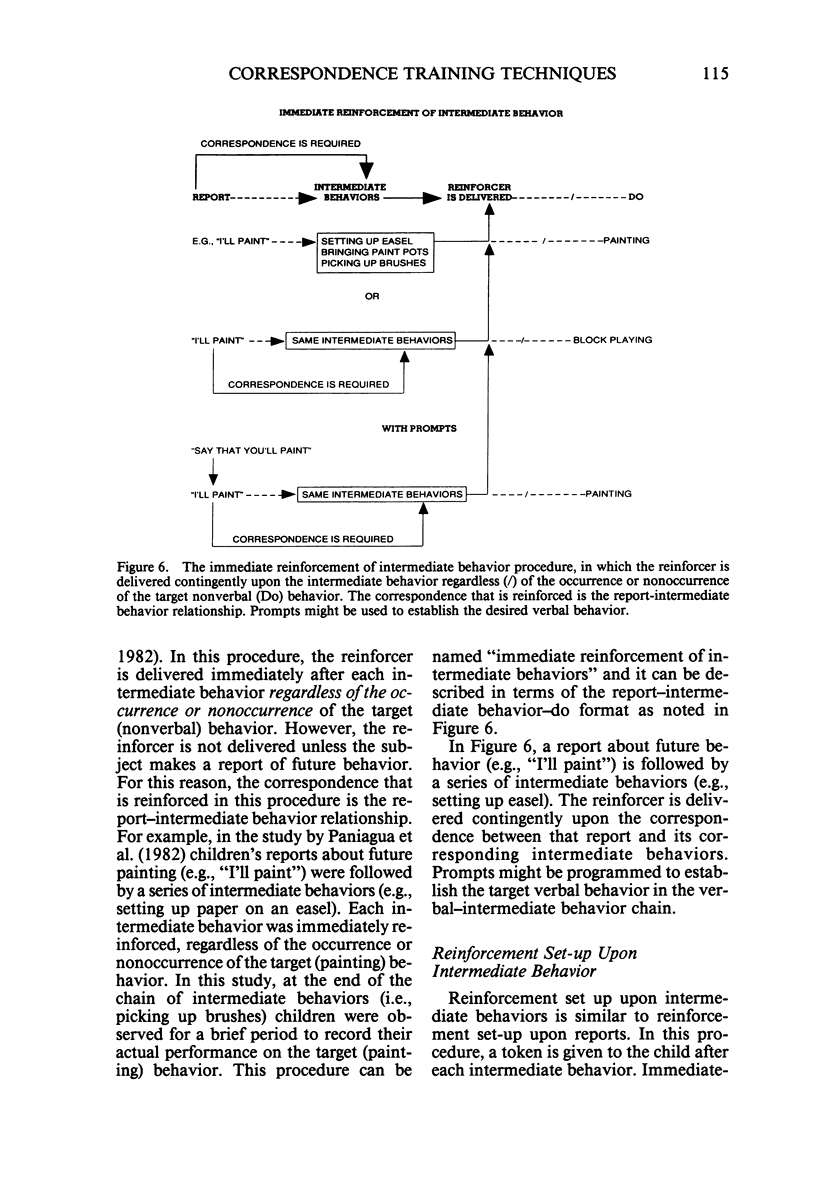
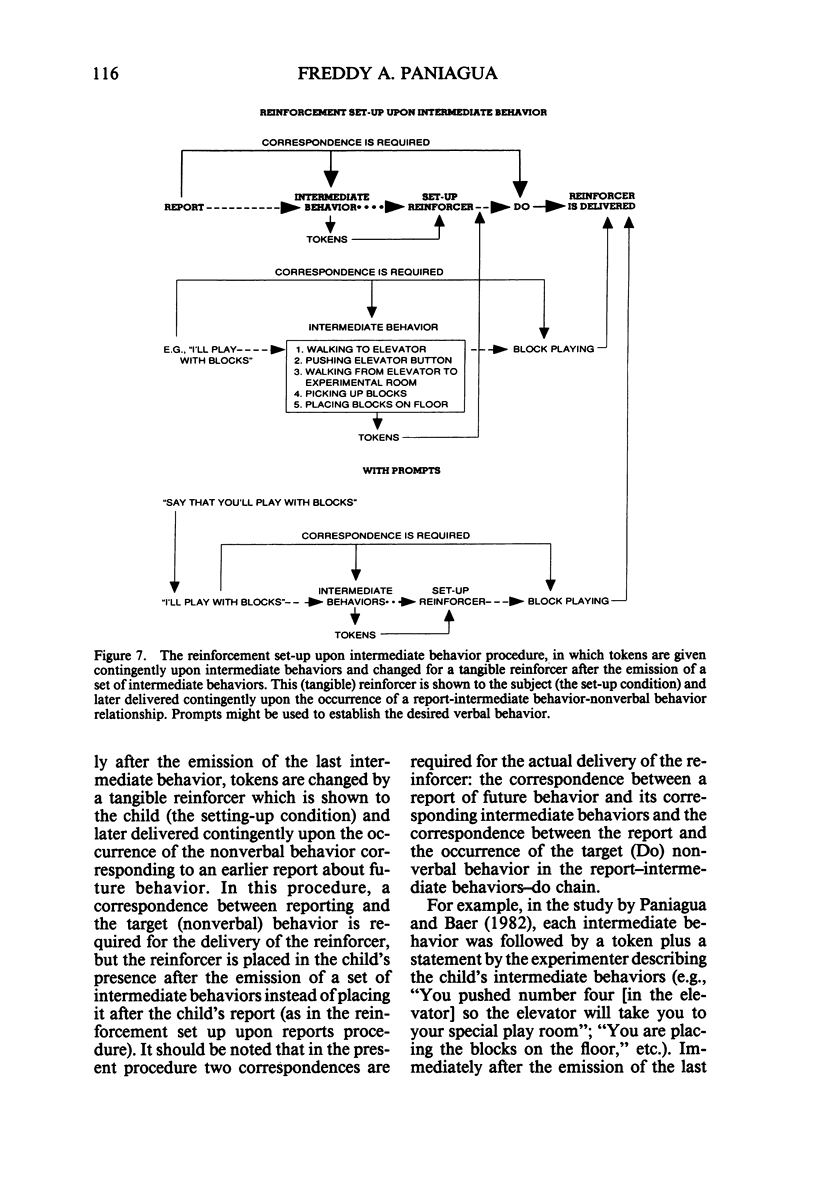
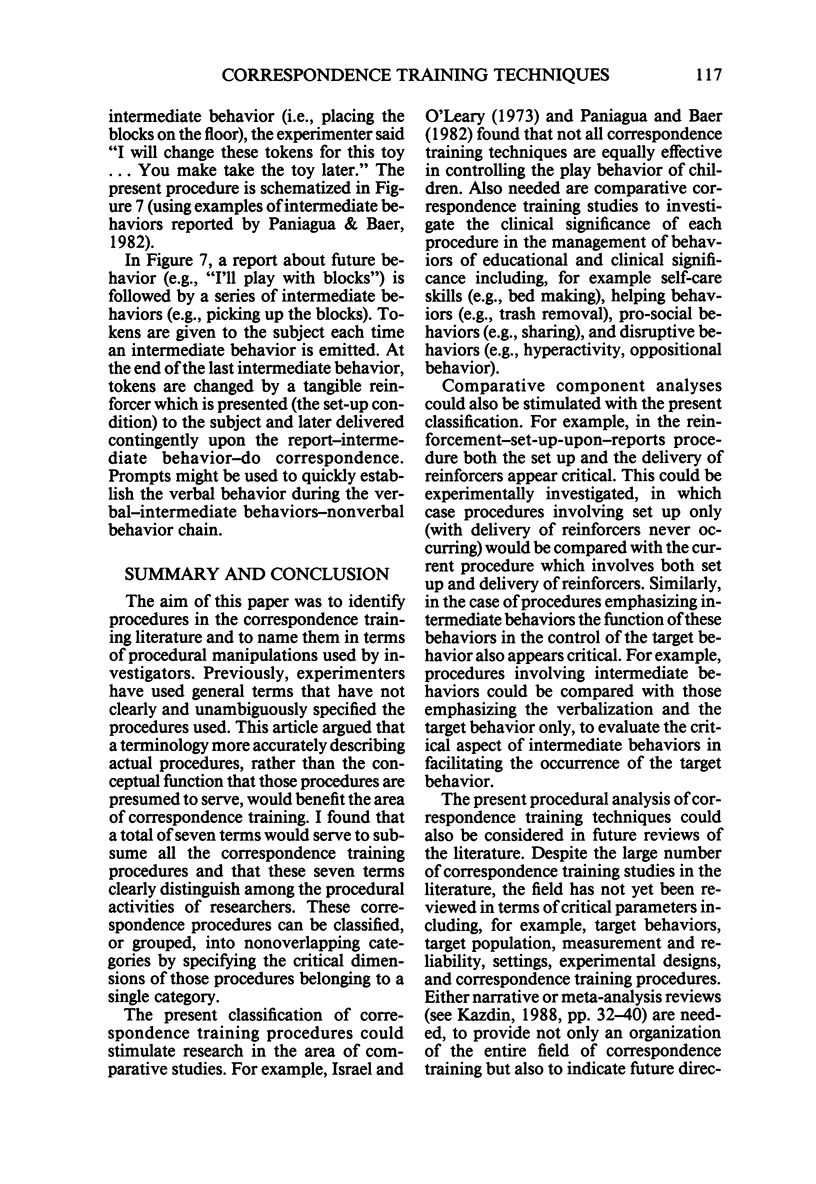
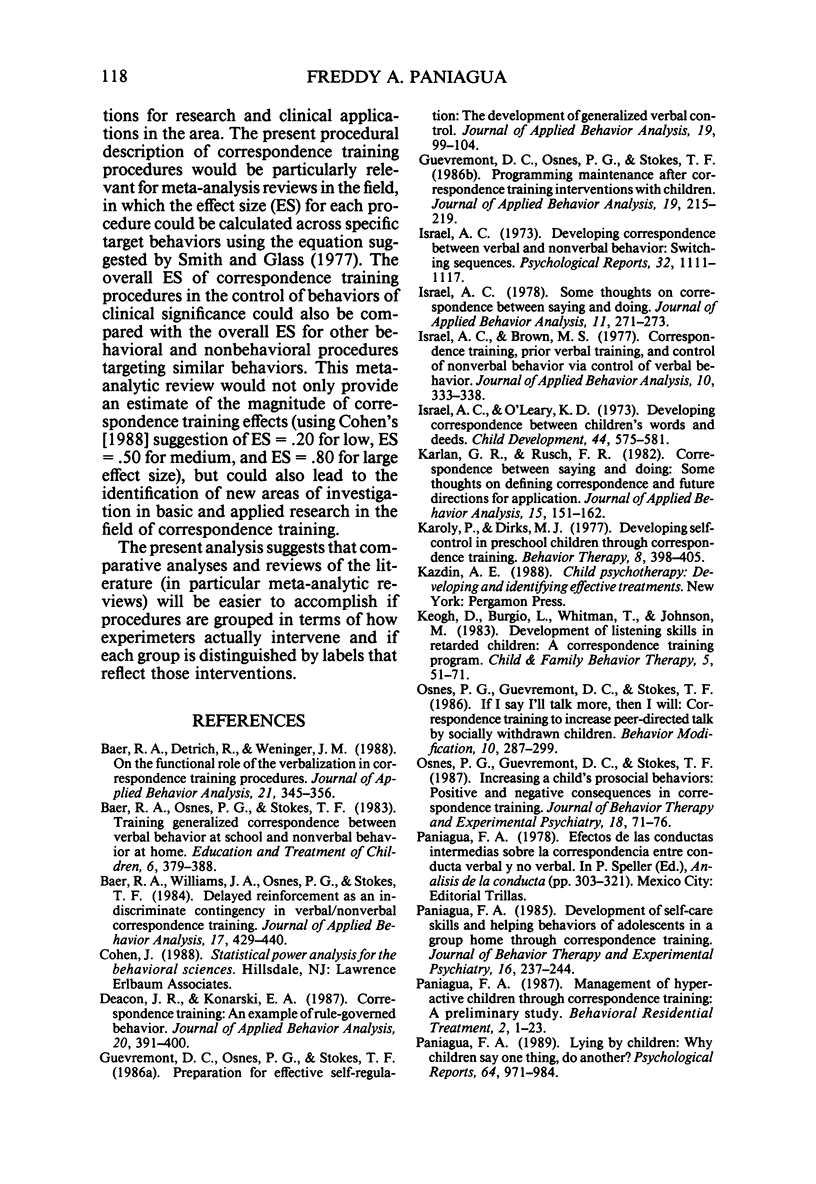

Selected References
These references are in PubMed. This may not be the complete list of references from this article.
- Baer R. A. On the functional role of the verbalization in correspondence training procedures. J Appl Behav Anal. 1988 Winter;21(4):345–356. doi: 10.1901/jaba.1988.21-345. [DOI] [PMC free article] [PubMed] [Google Scholar]
- Baer R. A., Williams J. A., Osnes P. G., Stokes T. F. Delayed reinforcement as an indiscriminable contingency in verbal/nonverbal correspondence training. J Appl Behav Anal. 1984 Winter;17(4):429–440. doi: 10.1901/jaba.1984.17-429. [DOI] [PMC free article] [PubMed] [Google Scholar]
- De Freitas Ribeiro A. Correspondence in children's self-report: Tacting and manding aspects. J Exp Anal Behav. 1989 May;51(3):361–367. doi: 10.1901/jeab.1989.51-361. [DOI] [PMC free article] [PubMed] [Google Scholar]
- Deacon J. R., Konarski E. A., Jr Correspondence training: an example of rule-governed behavior? J Appl Behav Anal. 1987 Winter;20(4):391–400. doi: 10.1901/jaba.1987.20-391. [DOI] [PMC free article] [PubMed] [Google Scholar]
- Guevremont D. C., Osnes P. G., Stokes T. F. Preparation for effective self-regulation: the development of generalized verbal control. J Appl Behav Anal. 1986 Spring;19(1):99–104. doi: 10.1901/jaba.1986.19-99. [DOI] [PMC free article] [PubMed] [Google Scholar]
- Guevremont D. C., Osnes P. G., Stokes T. F. Programming maintenance after correspondence training interventions with children. J Appl Behav Anal. 1986 Summer;19(2):215–219. doi: 10.1901/jaba.1986.19-215. [DOI] [PMC free article] [PubMed] [Google Scholar]
- Israel A. C., Brown M. S. Correspondence training, prior verbal training, and control of nonverbal behavior via control of verbal behavior. J Appl Behav Anal. 1977 Summer;10(2):333–338. doi: 10.1901/jaba.1977.10-333. [DOI] [PMC free article] [PubMed] [Google Scholar]
- Israel A. C. Some thoughts on correspondence between saying and doing. J Appl Behav Anal. 1978 Summer;11(2):271–276. doi: 10.1901/jaba.1978.11-271. [DOI] [PMC free article] [PubMed] [Google Scholar]
- Karlan G. R., Rusch F. R. Correspondence between saying and doing: Some thoughts on defining correspondence and future directions for application. J Appl Behav Anal. 1982 Spring;15(1):151–162. doi: 10.1901/jaba.1982.15-151. [DOI] [PMC free article] [PubMed] [Google Scholar]
- Osnes P. G., Guevremont D. C., Stokes T. F. If I say I'll talk more, then I will. Correspondence training to increase peer-directed talk by socially withdrawn children. Behav Modif. 1986 Jul;10(3):287–299. doi: 10.1177/01454455860103002. [DOI] [PubMed] [Google Scholar]
- Osnes P. G., Guevremont D. C., Stokes T. F. Increasing a child's prosocial behaviors: positive and negative consequences in correspondence training. J Behav Ther Exp Psychiatry. 1987 Mar;18(1):71–76. doi: 10.1016/0005-7916(87)90074-7. [DOI] [PubMed] [Google Scholar]
- Paniagua F. A., Baer D. M. Luria's regulatory concept and its misplacement in verbal-nonverbal correspondence training. Psychol Rep. 1988 Apr;62(2):371–378. doi: 10.2466/pr0.1988.62.2.371. [DOI] [PubMed] [Google Scholar]
- Paniagua F. A. Development of self-care skills and helping behaviors of adolescents in a group home through correspondence training. J Behav Ther Exp Psychiatry. 1985 Sep;16(3):237–244. doi: 10.1016/0005-7916(85)90069-2. [DOI] [PubMed] [Google Scholar]
- Paniagua F. A. Lying by children: why children say one thing, do another? Psychol Rep. 1989 Jun;64(3 Pt 1):971–984. doi: 10.2466/pr0.1989.64.3.971. [DOI] [PubMed] [Google Scholar]
- Risley T. R., Hart B. Developing correspondence between the non-verbal and verbal behavior of preschool children. J Appl Behav Anal. 1968 Winter;1(4):267–281. doi: 10.1901/jaba.1968.1-267. [DOI] [PMC free article] [PubMed] [Google Scholar]
- Rogers-Warren A., Baer D. M. Correspondence between saying and doing: teaching children to share and praise. J Appl Behav Anal. 1976 Fall;9(3):335–354. doi: 10.1901/jaba.1976.9-335. [DOI] [PMC free article] [PubMed] [Google Scholar]
- Smith M. L., Glass G. V. Meta-analysis of psychotherapy outcome studies. Am Psychol. 1977 Sep;32(9):752–760. doi: 10.1037//0003-066x.32.9.752. [DOI] [PubMed] [Google Scholar]
- Whitman T. L., Scibak J. W., Butler K. M., Richter R., Johnson M. R. Improving classroom behavior in mentally retarded children through correspondence training. J Appl Behav Anal. 1982 Winter;15(4):545–564. doi: 10.1901/jaba.1982.15-545. [DOI] [PMC free article] [PubMed] [Google Scholar]


